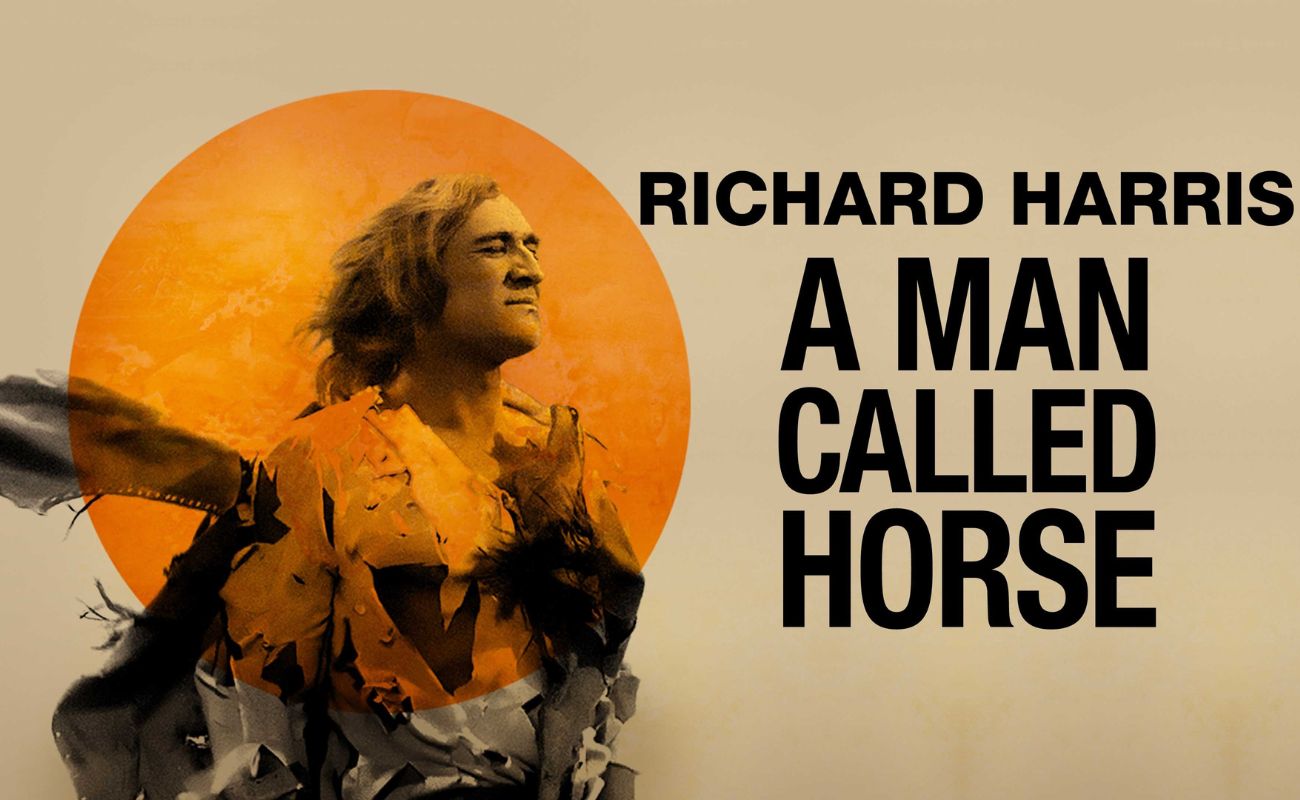
A Man Called Horse is a timeless classic in the realm of Western films, captivating audiences with its gripping story and authentic portrayal of Native American culture. Released in 1970, this Richard Harris-starrer follows the journey of John Morgan, an English aristocrat who finds himself immersed in the unfamiliar world of the Sioux tribe after being captured during a hunting expedition. Directed by Elliot Silverstein, the film beautifully intertwines themes of cultural exploration, self-discovery, and the human spirit’s indomitable will to survive. A Man Called Horse has not only left an indelible mark on cinema history but has also sparked a renewed interest in American indigenous cultures. In this article, we delve into 30 fascinating facts about this iconic movie, shedding light on its production, impact, and enduring legacy.
Key Takeaways:
- A Man Called Horse is a classic Western film that authentically portrays Native American culture, sparking renewed interest and influencing later films like Dances with Wolves and The Last of the Mohicans.
- The movie takes viewers on an emotional journey, challenging traditional Western themes and exploring universal concepts of identity, cultural exchange, and the search for belonging.
A Unique Western Adventure
A Man Called Horse is a classic Western film released in 1970, directed by Elliot Silverstein. It stands out from other Westerns of its time due to its unique storyline and portrayal of Native American culture.
Based on a Short Story
The movie is based on a short story by Dorothy M. Johnson, which was first published in The story explores the themes of identity, cultural clash, and personal struggle.
Starring Richard Harris
The film stars Richard Harris in the lead role of John Morgan, an English aristocrat who is captured by a Sioux tribe and becomes assimilated into their culture.
Authentic Native American Representation
A Man Called Horse is praised for its authentic portrayal of Native American culture and traditions. The film took great care in depicting the rituals, customs, and beliefs of the Sioux tribe.
Filmed on Location
The movie was filmed on location in South Dakota, providing stunning visuals of the Great Plains and adding to the authenticity of the story.
Cultural Exchange
The film explores the theme of cultural exchange as John Morgan learns the ways of the Sioux tribe and earns their respect and acceptance. It highlights the importance of understanding and appreciating different cultures.
Native American Language
In order to make the film as authentic as possible, the Native American actors speak in the Lakota language throughout the movie. This adds a layer of realism to their performances.
Rituals and Traditions
The movie showcases various Native American rituals and traditions, including the Sun Vow ceremony, sweat lodges, and the vision quest. These scenes are visually captivating and provide insight into the Sioux culture.
Critical Acclaim
A Man Called Horse was well-received by critics and audiences alike. It was praised for its groundbreaking portrayal of Native American culture and Richard Harris‘ powerful performance.
Academy Award Nomination
The film received a nomination for Best Sound at the 43rd Academy Awards, recognizing the excellent sound design and immersive audio experience it provided.
Box Office Success
Despite being a relatively low-budget film, A Man Called Horse became a box office success, grossing over $14 million worldwide.
Cultural Impact
The movie’s release sparked a renewed interest in Native American culture and history, leading to further exploration of these topics in both film and literature.
Sequels and Spin-offs
A Man Called Horse spawned two sequels: The Return of a Man Called Horse (1976) and Triumphs of a Man Called Horse (1983). These films continued the story of John Morgan and his encounters with Native American tribes.
Influential Soundtrack
The film’s soundtrack, composed by Leonard Rosenman, is considered influential in its use of traditional Native American music combined with Western scoring.
Cultural Sensitivity
Director Elliot Silverstein and the cast made a conscious effort to approach the subject matter of Native American culture with sensitivity and respect. They consulted with Native American advisers to ensure accuracy and avoid cultural appropriation.
Impact on Western Genre
A Man Called Horse challenged the traditional themes and narratives of the Western genre by introducing a complex exploration of cultural identity and breaking down stereotypes.
Historical Context
The film is set in the 1820s, during a time of significant change and conflict as settlers moved westward and clashed with Native American tribes. It provides a window into this fascinating period of American history.
Universal Themes
While the film has a specific focus on Native American culture, it also explores universal themes such as personal transformation, survival, and the search for belonging.
Symbolism and Metaphor
A Man Called Horse incorporates symbolism and metaphor, using traditional Native American symbols and metaphors to convey deeper meanings and messages throughout the story.
Choreographed Fight Scenes
The movie features well-choreographed fight scenes that showcase the unique fighting style of the Sioux tribe. These scenes are intense, adding to the overall excitement of the film.
Authentic Costumes and Props
The costume and production design teams worked diligently to ensure that the costumes and props used in the film were historically accurate and representative of the Sioux tribe’s culture and attire.
Reflection of Societal Issues
A Man Called Horse subtly addresses societal issues such as racism, discrimination, and the destructive impact of colonization on indigenous communities.
Emotional Journey
The film takes the audience on an emotional journey as they witness John Morgan’s transformation from a captured outsider to a respected member of the Sioux tribe.
Exploration of Masculinity
The movie delves into different aspects of masculinity, challenging traditional notions of strength and bravery by emphasizing the importance of empathy and understanding.
Historical Accuracy
A Man Called Horse strives for historical accuracy by depicting the cultural practices and lifestyles of the Sioux tribe as accurately as possible based on available research.
Narrative Structure
The film follows a traditional three-act narrative structure, with a clear setup, confrontation, and resolution, allowing the audience to engage with the story on a deeper level.
Influence on Later Films
A Man Called Horse served as an inspiration for later films that explored similar themes, such as Dances with Wolves (1990) and The Last of the Mohicans (1992).
Positive Representation
The movie presents a positive representation of Native American culture, showing its richness, complexity, and contributions to society.
Cinematic Visuals
The cinematography in A Man Called Horse is visually stunning, capturing the vast landscapes of the Great Plains and immersing the audience in the beauty of the natural surroundings.
Enduring Legacy
A Man Called Horse continues to be recognized as a significant film in the Western genre and a pioneering work in its authentic depiction of Native American culture.
Conclusion
After delving into the fascinating world of the movie “A Man Called Horse”, it becomes evident that this film holds a special place in cinematic history. From its groundbreaking portrayal of Native American culture to its unforgettable performances, this movie has captivated audiences for decades.
With its unique storytelling, stunning visuals, and thought-provoking themes, “A Man Called Horse” continues to be a timeless classic that showcases the power of cinema to educate, entertain, and inspire. Whether you’re a fan of Westerns or simply appreciate a well-crafted film, this movie is a must-watch.
So grab your popcorn, settle into your favorite chair, and embark on a cinematic journey through the untamed wilderness with “A Man Called Horse. You won’t be disappointed!
FAQs
Q: When was the movie A Man Called Horse released?
A: The film was released on May 29, 1970.
Q: Is A Man Called Horse based on a true story?
A: While the film is not a true story, it draws inspiration from the experiences of real-life explorer and author Richard Harris, who was adopted by a Native American tribe.
Q: Who directed A Man Called Horse?
A: The movie was directed by Elliot Silverstein.
Q: Who starred in A Man Called Horse?
A: Richard Harris played the lead role of John Morgan, with supporting performances by Judith Anderson and Jean Gascon.
Q: What awards did A Man Called Horse receive?
A: The film received critical acclaim and was nominated for an Academy Award for Best Music, Original Score.
Q: Where was A Man Called Horse filmed?
A: The movie was primarily filmed in the picturesque landscapes of Mexico, giving it an authentic and stunning backdrop.
Q: What is the runtime of A Man Called Horse?
A: The movie has a runtime of approximately 114 minutes.
Was this page helpful?
Our commitment to delivering trustworthy and engaging content is at the heart of what we do. Each fact on our site is contributed by real users like you, bringing a wealth of diverse insights and information. To ensure the highest standards of accuracy and reliability, our dedicated editors meticulously review each submission. This process guarantees that the facts we share are not only fascinating but also credible. Trust in our commitment to quality and authenticity as you explore and learn with us.

